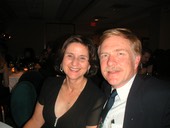We had 2 days in St. Petersburg, Russia. On our first day we hired a car and a driver and went to Catherine the Great's palace, the Hermitage, and the Church of the Spilled Blood. It was a long, tiring day of incredible sights.
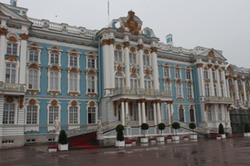
It was a gray drizzly morning what must be common weather in St. Petersburg. Our guide told us that they average 50-60 sunny days a year in the city. Colorado Springs, in comparison has 300 days of sunshine a year. We complain when we have 2 days in a row of cloudy weather. The picture on the right is main entrance to the palace. The complete palace is perhaps 5-6 times bigger that the section than the picture—it is huge. Her are some more pictures from the palace and the gardens surrounding it.
It must have taken massive resources to build this palace and Peterhof (see tomorrow). It is no wonder the peasants got tired of it and revolted in the early 1900s. Most of the palace was decorated with gold.
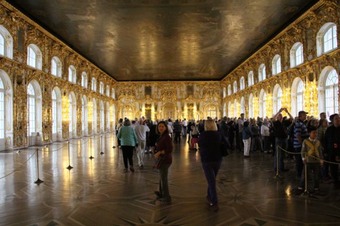

A room in the palace. A statue of Catherine the Great.


One of the gardens with a small house. The grounds of the palace were magnificent.
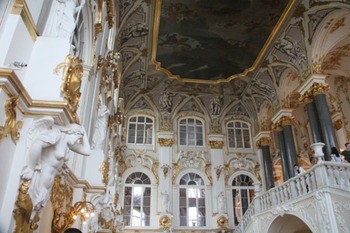
We ate lunch in a non-tourist restaurant. The food was meat, vegetables, and a starch. Lots of food. Chuck had borscht for the first time in his life. It was quite good, as one might expect in Russia.
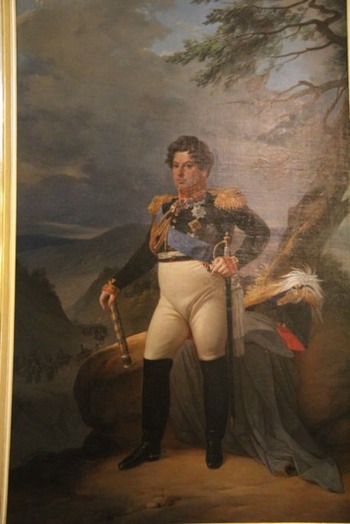
Our next stop was the Hermitage. Russia was heavily influenced by Europe and its traditions and cultures in Catherine’s time, and after she ascended to the Russian throne in 1764 she determined to be a collector of art. She bought her first collection of 225 pieces of art that same year. She built the first building in the Hermitage complex to house that art. As she collected more and more she added additional buildings until the present 5 buildings were constructed. Note that this was a private collection in those days. One hundred years after her death, one of the building was made into a public museum. It was only after the 1917 revolution that the entire collection was viewable by the public. In addition, after the revolution the Bolsheviks confiscated all private art collections and they ended up in the Hermitage. It is second largest museum in the world (after the Louvre) and the largest art gallery in the world.
Since the Hermitage was the winter palace, the interiors of the rooms are incredible. The picture above is an example of the beauty of the rooms (the grand staircase). The building is not that impressive from the outside but from the inside it palatial.
Taking good pictures of the art without using a flash or other bright lights is not possible. I am sure there are good sites on the Internet that will show the art. We did find this portrait of a Russian Field Marshal to be amusing. In a room full of imposing Military leaders, this one doe not fit the stereotype.
The Hermitage suffered some damage during WWII. Before the German siege of Leningrad (in those days), the staff managed to move 2 trainloads of art to a safe place in western Russia. Still much of the art spent all 900 days of the siege in the museum. After the war, the art was returned and the Hermitage was reopened to the public. During that siege, one million people died in Leningrad (out of a population of 3 million). While the Germans never entered the city proper, the war took a terrible toll on the people of the city.

Since the collapse of the Soviet Union and the resulting change in relationships with the west, St. Petersburg and its historical sites have become a huge tourist destination. The Hermitage and the Peterhof (tomorrow’s post) were very crowded. We rarely saw any other language throughout the city, other than in some of the museums. Oh, there were plenty Pizza Hut, Subway, KFC, and McDonald signs. <grin>
Out last stop was the Church of the Spilled Blood. This is its commonly used name. The official name is the Church of the Resurrected Christ. It was built to commemorate the assassination of Alexander II on the location where it happened. We were struck with awe when we saw the outside. It is a beautiful Russian Orthodox church as you can see from the following pictures.
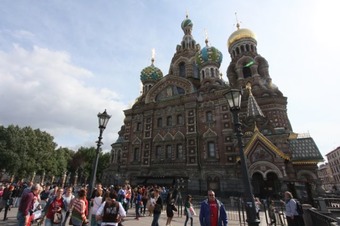
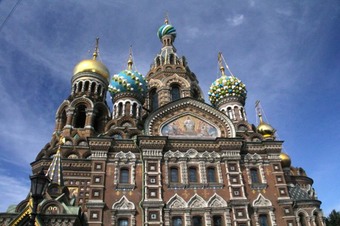
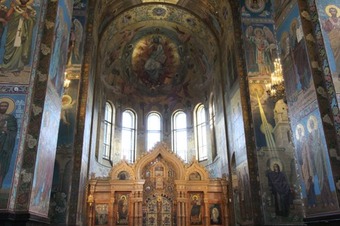
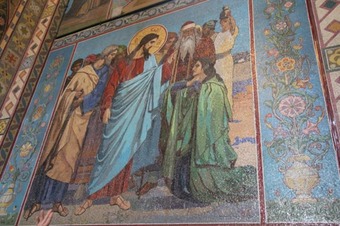

Katy, Caroline, our guide Paul (Pavel in Russian), our driver, and Suzanne.
